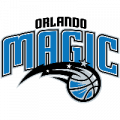The Oakland Athletics entered the 2014 season as one of the top contenders for a World Series Championship. With back-to-back American League West Division titles in 2012 and 2013, the A’s made minor tweaks to their lineup and looked to find the means of getting over the Detroit Tigers in the playoffs.
Heading towards the start of the regular season the A’s received news that starting pitchers Jarrod Parker and A.J. Griffin would both need season-ending Tommy John surgery. This would be Parker’s second Tommy John surgery and immediately put his career in question. With those two losses in their starting rotation, the A’s turned to Jesse Chavez, Tommy Milone, and Drew Pomeranz to answer the call and they all responded well in the first few months of the regular season.
The A’s came flying out of the gates firing on all cylinders. Starting pitching, led by Sonny Gray and Scott Kazmir, began the season with an 18-9 record in April and a 16-12 record in May. The Athletics offense turned it back on in June and were led by the triple-headed monster in the middle of their lineup with Yoenis Cespedes, Brandon Moss, and Josh Donaldson providing all of the power the team needed. The club went 17-9 in the month of June and had a run differential over +100 vs. their opponents.
At the time, the team started to show signs that they wearing down, as injuries to center fielder Coco Crisp, shortstop Jed Lowrie, and catcher John Jaso started to take effect. Billy Beane also realized that he was likely riding the arms of Gray, Kazmir and Chavez a little too much. The perceived strength of the A’s bullpen in the early months of the season fell apart, as supposed closer Jim Johnson never found his way to success in Oakland. Johnson was eventually cut by the A’s due to the fact that he could not get the ball over the plate and struggled mightily at O.co Stadium - leading to continuous boo birds for each appearance. Former All-Star Ryan Cook also lost most of his confidence in the early portion of the summer and couldn’t be relied upon in pressure situations.
While Sean Doolittle was one of the few bright spots for the A’s bullpen, Beane knew that something had to be done. Before the All-Star break, Beane traded the A’s No. 1 prospect Addison Russell to the Chicago Cubs for starting pitchers Jeff Samardzija and Jason Hammel. The trade put the rest of Major League Baseball on notice that the A’s were going all-in for the ring in 2014.
Heading into the All-Star break, the A’s had the best record in baseball (59-36) and a double-digit lead in the AL West. The team sent seven players to the All-Star game - Josh Donaldson, Yoenis Cespedes, Brandon Moss, Derek Norris, Scott Kazmir, Sean Doolittle and the newly-acquired Jeff Samardzija.
Things were looking picture perfect in Oakland. As the trade deadline approached, most fans believed that Billy Beane might try to find some help in the middle infield, as Jed Lowrie continued to struggle on both sides of the diamond and second baseman Eric Sogard remained a black hole at the bottom of the A’s lineup with a batting average floating around .200.
What happened next sent ripples throughout the American League. At the trade deadline, Beane pulled off a stunning move when he traded Cespedes to the Boston Red Sox for starting pitcher, and costless agent to be, Jon Lester. Lester is a clear ace and his past postseason success is what the team needed. This move may or may not have been made if not for the underperforming Jason Hammel - who never could get going with the move from the National League to the American League. The A’s also acquired outfielder Jonny Gomes in the deal with the Red Sox and re-acquired outfielder Sam Fuld from the Minnesota Twins for starting pitcher Tommy Milone at the deadline. Gomes and Fuld were supposed to help fill the void left by Cespedes.
Unfortunately for the A’s organization, everything went south after the trade deadline. The Cespedes deal put added pressure on Brandon Moss and Josh Donaldson and both failed to respond at the plate. While the season started to wear on their bodies, they needed to perform for the Athletics and that simply did not happen.
While it easy to single out the Lester for Cespedes deal as the turning point in the season, there are a lot of other contributing factors that led to a completely underwhelming second half of the season for the A’s. No one in the A’s lineup was hitting the ball well. After hitting .251 as a team in July, the A’s offense hit .223 in August and .228 in September.
As the summer started to wind down, the A’s struggles mounted, and the Los Angeles Angels began to play outstanding baseball. The teams were clearly going in different directions by mid-August. What was once a double-digit lead in the standings, the A’s fell behind the Angels in the division and were never able to rebound. By the time mid-September rolled around, the Angels held a double-digit lead in the division and the A’s were forced to turn their attention to the American League Wild Card.
With the Seattle Mariners on their heels entering the last two weeks of the season, the A’s simply limped into the playoffs, unable to clinch a position in the postseason until the last day of the regular season. Manager Bob Melvin reset his rotation so that Sonny Gray would be on the mound for Game 162 and Jon Lester would pitch in the one-game playoff. Gray answered the call, pitching an absolute gem in the season finale to help Oakland clinch a spot in the postseason.
For the third time in as many years, the A’s lost a ‘do or die’ game in the postseason, giving away the American League Wild Card Game to the Kansas City Royals. The same team that is now representing the American League in the World Series and the team that has yet to lose a game this postseason. The shine on Jon Lester’s postseason career took a bit of a hit in the game as he gave up six runs in 7 1/3 innings pitched. He received virtually no help from the A’s defense, which became a common theme in the second half of the season. Oakland held a 6-2 lead entering the eighth inning and Lester struggled to begin the inning. However, the bullpen ultimately failed the A’s club again, with Luke Gregerson allowing the Royals within one run in the eighth inning. Then, for the third consecutive postseason, Sean Doolittle failed to seal the deal for the A’s and allowed the tying run to cross the plate in the bottom of the ninth inning.
Somewhat fitting, the A’s and Royals played into the 12th inning, when the A’s put a run across the board. Reliever Dan Otero, who had a fantastic regular season, got into trouble in the bottom of the 12th inning. Bob Melvin went to reliever Fernando Abad (who also exceeded expectations in the regular season) to get one out. For some reason still unknown to many, Melvin turned the game over to Jason Hammel. Hammel quickly gave up the game-winning hit to the Royals and the rest continues to become history, as the Royals will be taking on the San Francisco Giants this coming week in the World Series.
There were a number of highlights in the early months of the season. However, with heavy expectations, the 2014 Oakland A’s wilted under the pressure. Everyone involved struggled, from Bob Melvin making more than a few questionable decisions in the final month of the A’s season, to the ineptitude of the A’s offense, and the struggles of both the overall defense of the club and in the bullpen.
A lot of changes are likely to be coming for the A’s franchise in the coming weeks and months. Will Billy Beane find a way to keep the A’s in contention for another season or two, or is it time to blow things up with the current core and build towards 2017 and beyond? Be on the lookout for a “What’s Next” write-up in the coming weeks here on Vavel.










































